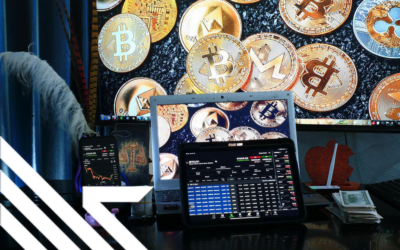Bitcoin has continued to experience growth over time, but there is little doubt that it lacks the inherent capacity that can allow it to compete with centralized payment systems like Visa. While Bitcoin’s layer one infrastructure capacity processes about seven transactions in a second, Visa can do as many as 70,000.
The limited capacity of the Bitcoin network often leads to congestion, especially when there is increased activity. This, in turn, causes delays in the confirmation of transactions. The congestion can also lead to extremely high fees as users compete to have their transactions ahead of the line for confirmation on the network. In such times, it is common for a user to pay $5 to send as little $5 across the network.
Besides low speed and high fees, the lack of enough capacity on the blockchain network has stood in the way of innovation. For example, content producers and consumers cannot use bitcoin to process micropayments.
Since its launch in 2009, it has been possible to scale Bitcoin through trusted third party service providers. Indeed, exchanges have always provided the mechanism through which users can move Bitcoin faster and at significantly low fees. However, that goes against the core principle of trustlessness on which Bitcoin is built.
The Lightning Network protocol is a layer two scaling solution for blockchains like the Bitcoin network that does not require users to trust one another or central authority such as an exchange. Meanwhile, with the lightning network, Bitcoin can even transact millions of transactions in a second, mostly at a nominal fee per transaction.
Indeed, the Lightning Network protocol is the most promising scaling solution to help Bitcoin overcome most of the shortcomings that have stood in its way. In a white paper, published in June 2022, the Federal Reserve Bank of Cleveland, a branch of the Federal Reserve, described the lightning network as the technology that will turn Bitcoin into money.
The Lightning Network protocol concept was first described in a 2015 technical white paper by Joseph Poon and Thaddeus Dryja.
How the lightning network protocol won
Joseph Poon and Thaddeus Dryja published their white paper when a build-up to the biggest Bitcoin civil war—the 2017 User Activated Soft Fork (UASF) civil war—had begun.
Different groups were emerging and suggesting different approaches to scaling the Bitcoin network. Later on one of these groups saw and embraced the lightning network as the most viable scaling option.
Meanwhile, the other groups forming included those who believed the solution to scaling Bitcoin could only be achieved through increasing the block size from 1MB. This group had subgroups such as those suggesting 2MB, 4MB, 8MB, and also those who thought it unnecessary to have a cap on the block size.
The block is the batch of bitcoin transactions that are processed and confirmed. Satoshi Nakamoto designed it to be 1MB in size.
There was also a group mostly made of companies offering services in the Bitcoin space, such as exchanges, payment processors, and miners. This group suggested what came to be known as Segregated Witness (SegWit), a scaling solution that reduced the amount of data from each transaction that goes into the block. It was believed this would create up to 60% more room in the block.
Besides, the SegWit solution offered a mechanism that would make implementing Lightning Network possible.
Most of these suggestions, in particular, increasing the block size and SegWit, required a hard fork. That means changing critical parts of the core software of the Bitcoin protocol.
While the lightning network was a layer two scaling, it had two obstacles on its way.
The first obstacle was the other scaling solutions that were being considered. The second obstacle was a technical one; there was no mechanism to create (hash) time lock contracts on the blockchain, a critical component for implementing the lightning network. The latter is what SegWit offered to fix.
Bitcoin Improvement Proposals (BIPs) were prepared for the majority of the suggested scaling solutions, and their versions of the Bitcoin core software were developed. With that, it was a matter of them gaining support from the community. The one with the most nodes supporting it would be considered to have won.
In early 2017, those supporting the Lightning Network and those behind the Segwit solution formed a loose coalition known as the User Activate Soft Fork (UASF) to go against the so-called big blockers. The civil war culminated in the split of Bitcoin into Bitcoin and Bitcoin Cash in August 2017.
The Bitcoin network embraced a core software that implemented the SegWit solution. While it did not immediately implement the lightning network, it created capacity for it to be added later.
The actual technical capacity that SegWit created made it possible to generate transaction signatures that the Bitcoin network could enforce in the future. This is known as the Hash Time-Locked Contracts (HTLC), a sort of smart contract on the Bitcoin network.
How lightning network works
Once implemented on the Bitcoin network, the Lightning Network protocols create the possibility that most of the transactions do not have to go onto the Blockchain. Nevertheless, they are still secured as though they are recorded on the Blockchain.
This is achieved by making it possible that two users can create a payment channel through which to transact with each other. The channel is registered on the blockchain as a public address with 2-of-2 private keys. The two users on the payment channel have to sign each transaction that goes through it.
There should be a funding transaction, which puts money in the address shared by the two people on the payment channel. Either or both can contribute to that input transaction.
For example, Mary and Jane can set up a payment channel with 2 bitcoins from Mary. Each time Mary pays Jane from that fund, both use their private keys to secure the transaction using Hash Time-Locked Contracts so that it can be settled on the blockchain in the future.
The channel can handle as many transactions as the parties allow. At any time, either party can close out the channel, and at that point, only the net balances are confirmed on the Bitcoin blockchain.
But the real power of the lighting network is not single payment channels between pairs of users. The actual potential of the protocol is achieved by the fact that the payment channels created by users can be connected to create a mesh network.
With that in place, if John has an open channel with Mary and Mary has an open channel with Jane, payment can be made between John and Jane through Mary. Indeed, the protocol can discover the shortest path possible whenever a user wants to pay another user with whom they don’t have a direct payment channel.
What exactly does that mean?
The following are the benefits that users can get from the lightning network:
Reducing blockchain congestion
With the majority of transactions being processed through payment channels and only the funding and closing transactions going to the blockchain, there will be less congestion on the Blockchain. Indeed, with more payment channels created, most transactions between users will not go onto the blockchain.
Increase speed
Since users don’t have to wait for confirmation on the Blockchain for finality and given that there will be no congestion on the blockchain, there will be instant transactions. That means in seconds, one will have a transaction completed.
Reduce cost
Only transactions recorded on the blockchain will require fees to be paid to miners. That will make most of the Bitcoin transactions be processed at very negligible frees. That is because users do not need to compete to have their urgent transactions confirmed.
Makes micropayments viable
Because of the high fees that the Bitcoin network charges users, it is impractical to process micropayments through it. On the lightning network, most transactions will be free to send and receive. And that makes it viable to pay even pennies for goods and services using Bitcoin.
That opens up many other opportunities besides making Bitcoin a digital medium of exchange. For example, it will be possible to implement the concept of streaming money. Say you are watching a movie on an online platform, you can pay in real time for the seconds and minutes you are watching.
Support atomic swaps
The same Lightning Network can support other cryptocurrencies besides Bitcoin. Mary can send Bitcoin to John, who in turn can send Litecoin to Jane based on the reigning exchange rates.
Where the implementation has reached
There is notable progress in the implementation of the lightning network. According to Bitcoin Visuals, a website that tracks the Lightning Network activity, there were over 80,000 payment channels in July 2022, an increase of over 100% from the previous years. Meanwhile, close to 20,000 nodes facilitate the protocol, and over 3000 bitcoins are transacted daily on the network.
The implementation is done through over 80 open source projects, some of the most notable being Lightning Network Daemon (LND), LnBook, and C-Lightning. To ensure that the protocol’s different implementations interoperate seamlessly, stakeholders came up with the Basis of Lightning Network Technology (Bolt) standards.
Challenges to the adoption of lightning network protocol
While the Lightning Network is a revolutionary layer scaling solution on the Bitcoin network, however, its adoption faces challenges, including the following:
Not user-friendly yet
The user interfaces of the lightning network are still highly technical for the ordinary end user. Having more easy-to-use Lightning network-compliant wallets is likely to help with this problem.
Bugs in supporting wallets
Most wallets and software needed to use this technology are still in trial. Users might be wary of using them, especially to pass significant amounts of bitcoins.
Not crossed the critical mass threshold
The Lightning network’s true utility happens when a significant amount of payment channels are created. In this early stage, it is the cases where you might want to pay someone, but you don’t have a clear or short path to make it possible.
Lack of support by some quarters
Major players in the space see the lightning network as a possible competitor. For example, exchanges could lose their businesses if more users prefer to use the network to swap different coins.
Whatever the case, the lightning network is making remarkable progress, and the community of users is growing over time. When there is a full implementation, Bitcoin, and other cryptocurrencies, will do as great in the function of a medium of exchange as it does as a store of value. That could even unlock more possibilities of it becoming a global unit of account.
Image courtesy of Pixabay.




